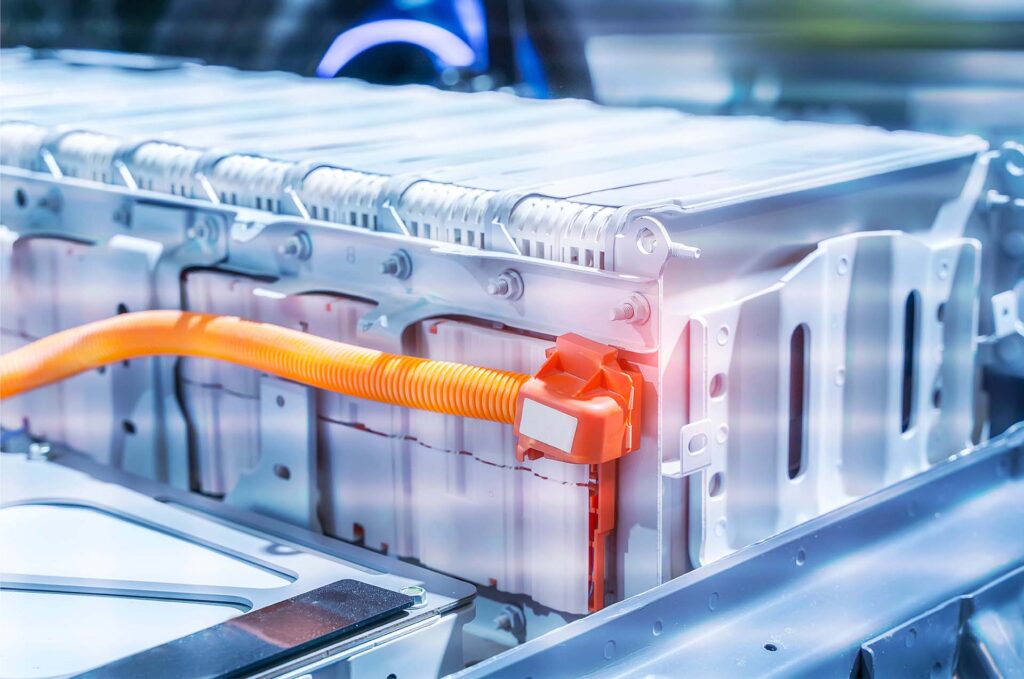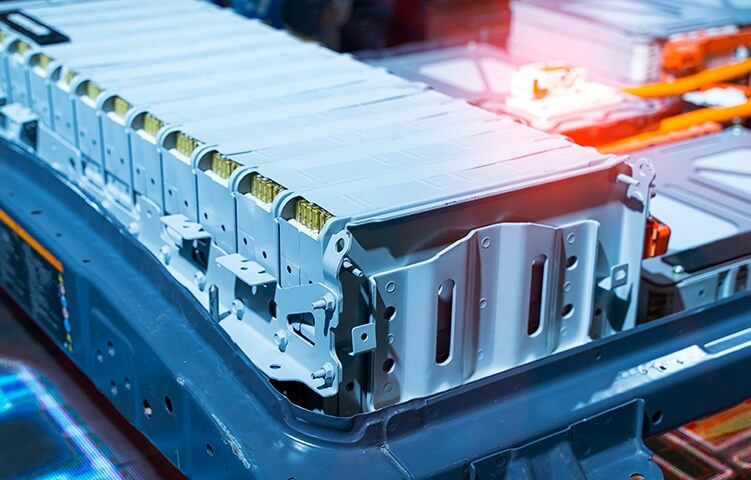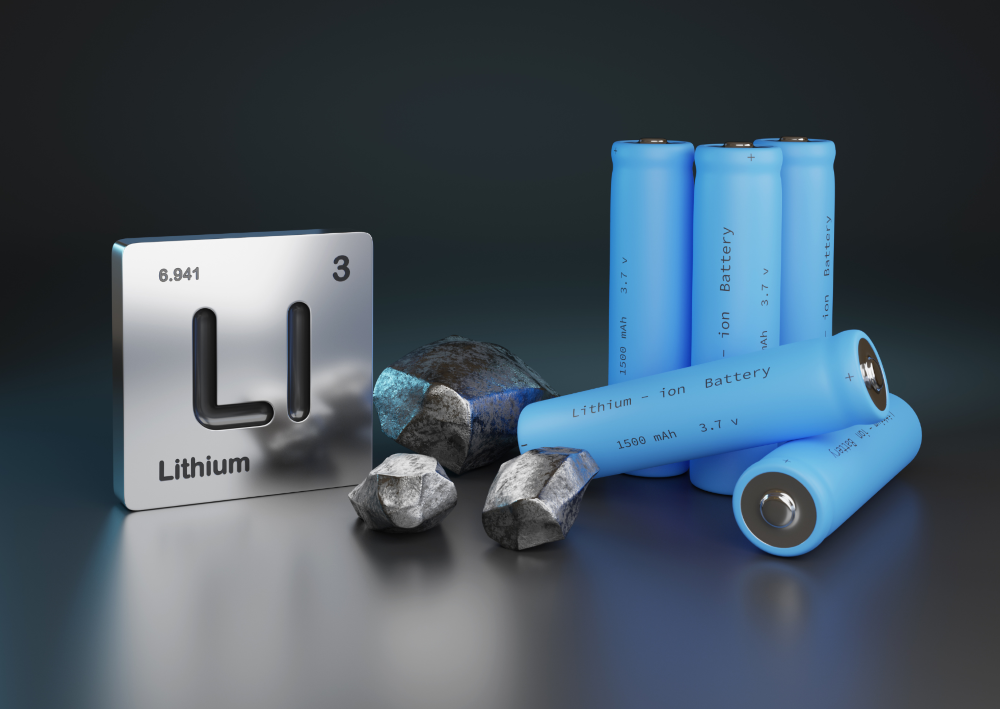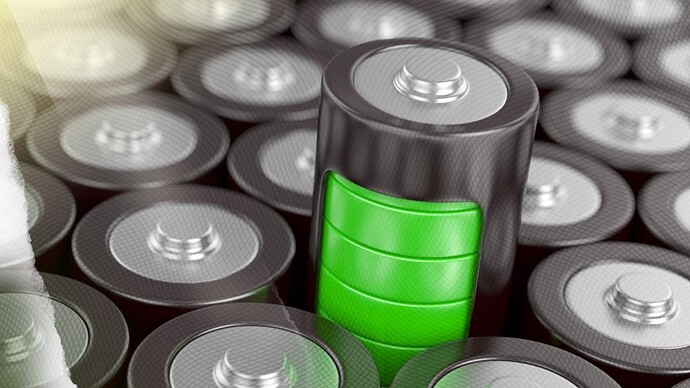Sodium is a green lithium alternative due to its abundance, reducing supply chains and costs. Compared to lithium, which is relatively scarce, sodium is much more plentiful, being about 1000 times more abundant.
This abundance could alleviate concerns about resource scarcity and mining impact. Sodium-ion batteries also offer advantages such as high power output, fast charging capabilities, and efficient operation even at lower temperatures. While sodium-ion batteries currently have lower energy density than lithium-ion batteries, ongoing research aims to improve their performance.
These efforts suggest that sodium-ion batteries could become a sustainable and cost-effective option for energy storage, particularly in applications prioritizing environmental impact and affordability.
Advantages of Sodium over Lithium

Sodium holds several advantages over lithium as a battery material, making it a promising green substitute:
Abundance and Cost
Sodium is a very common element, found in seawater and throughout the Earth’s crust. This translates to roughly 1000 times greater abundance than lithium.
With a vast and readily available resource, sodium-ion batteries have the potential to be significantly cheaper than lithium-ion batteries. This could be a major factor in widespread adoption, especially for large-scale applications.
Environmental Benefits
Lithium mining can be disruptive to ecosystems and communities. Sodium, on the other hand, can be extracted using less impactful methods, minimizing environmental damage.
Research is ongoing to develop sodium-ion batteries using more sustainable materials, further reducing their environmental footprint. This is in contrast to some lithium-ion batteries that rely on materials like cobalt, which can have ethical and environmental concerns associated with their mining.
Safety
Sodium-ion batteries exhibit a lower risk of thermal runaway compared to lithium-ion batteries. This means they are less likely to catch fire, especially in cases of damage or extreme temperatures, improving overall safety.
Additional Potential Advantages
- Fast Charging: Some research suggests sodium-ion batteries may have faster charging capabilities than lithium-ion batteries.
- Low-Temperature Performance: Early research indicates sodium-ion batteries might perform better at lower temperatures than lithium-ion batteries, which can struggle in cold environments.
Challenges of Sodium-ion Batteries

Despite the exciting potential of sodium-ion batteries, there are some significant hurdles to overcome before they can fully compete with lithium-ion technology:
Lower Energy Density
The primary challenge is lower energy density compared to lithium-ion batteries. This translates to:
- Shorter range for electric vehicles using sodium-ion batteries.
- Less energy storage capacity for portable electronics like laptops and phones.
Due to lower energy density, sodium-ion batteries require larger or heavier sizes to match lithium-ion battery energy capacity. This can be a major drawback for applications where size and weight are critical, such as electric vehicles and portable devices.
Slower Development Stage
Lithium-ion technology has benefited from decades of research and development, leading to significant advancements in performance. Sodium-ion batteries are still in a relatively early stage. Their performance lags behind in areas like energy density, cycle life, and charging speed, although some research suggests faster charging might be possible.
Material and Design Optimization
Optimizing electrode materials and overall battery design is crucial for unlocking the full potential of sodium-ion batteries. Researchers are actively exploring new materials and configurations to improve energy density, cycle life, and overall performance.
Additional Challenges
- Electrolyte Instability: Developing stable electrolytes that can efficiently transport sodium ions remains a challenge.
- Anode Material Challenges: Finding suitable anode materials that can effectively store and release sodium ions during charge and discharge cycles is an ongoing area of research.
What Is The Future of Sodium-ion Batteries?

The future of sodium-ion batteries is looking promising despite current challenges, largely due to ongoing research and development efforts worldwide.
Researchers are diligently working to improve sodium-ion batteries by exploring new electrode materials that can store more sodium ions efficiently. They are also developing stable and efficient electrolytes to enhance ion transport within the battery.
Additionally, efforts are underway to optimize the overall battery design to achieve higher energy density, increased power output, and longer cycle life. These advancements aim to address current limitations and make sodium-ion batteries more competitive and practical for various applications.
Sodium-ion batteries hold significant potential for diverse applications. They could be particularly useful in stationary energy storage for grids, offering lower costs and potentially longer lifespans compared to other technologies. In less demanding electric vehicles like city cars, sodium-ion batteries might be a viable option due to their lower cost and adequate range for specific uses.
Additionally, they could find a place in backup power systems where weight and energy density are less critical, but safety and affordability remain important factors.
So, it’s important to note that sodium-ion batteries are not meant to replace lithium-ion technology entirely. Instead, they are expected to complement it in specific applications where cost, safety, and environmental impact are primary considerations. Lithium-ion batteries are likely to remain dominant in areas requiring high energy density, such as portable electronics and long-range electric vehicles.
A Tale of Two Ions
Sodium-ion batteries have a long history, initially studied alongside lithium-ion systems until the 1980s when lithium-ion research surged ahead. Interest in sodium-ion technology waned until around 2012 when researchers like Tarascon reignited efforts, drawn by sodium’s perceived sustainability.
One key challenge with sodium-ion batteries is their lower energy density compared to lithium-ion counterparts, mainly due to sodium’s lower redox potential and higher atomic mass. This translates to about 30% lower energy density, impacting the driving range of electric vehicles. Despite this, sodium-ion batteries offer advantages in terms of resource availability, requiring fewer limited resources from the planet compared to lithium-ion batteries.
However, sodium-ion batteries currently have a higher environmental impact during production, releasing more greenhouse gases due to the need for larger material quantities to achieve the same energy output. Research suggests that over time, these environmental impacts could be reduced as sodium-ion battery technology improves.
Interestingly, sodium ions can move faster through battery materials than lithium ions, despite sodium’s heavier mass. This faster ion movement enables higher power output and faster charging capabilities in sodium-ion batteries—a potential advantage for certain applications.
Overall, while sodium-ion batteries face challenges in energy density and production emissions, ongoing research aims to enhance their performance and sustainability compared to lithium-ion systems.
References
- J.-M. Tarascon, “Na-ion versus Li-ion batteries: Complementarity rather than competitiveness,” Joule 4, 1616 (2020).
- P. Roy and S. K. Srivastava, “Nanostructured anode materials for lithium ion batteries,” J. Mater. Chem. A 3, 2454 (2015).
- W. Liu and D. B. Agusdinata, “Interdependencies of lithium mining and communities sustainability in Salar de Atacama, Chile,” J. Cleaner Prod. 260, 120838 (2020).
- S. H. Farjana et al., “Life cycle assessment of cobalt extraction process,” J. Sust. Mining 18, 150 (2019).
- J. F. Peters et al., “On the environmental competitiveness of sodium-ion batteries under a full life cycle perspective—a cell-chemistry specific modelling approach,” Sustainable Energy Fuels 5, 6414 (2021).
- J. Lindsay et al., “Sodium-ion batteries: A sustainable alternative to lithium-ion?” white paper, Minviro
Final Words
Sodium-ion batteries offer hope as eco-friendly replacements for lithium in specific uses. Their abundance may enable more sustainable battery production, lowering environmental impact.
Despite lower energy density, they excel in power output and rapid charging. Ongoing research aims to boost their effectiveness and affordability. As technology advances and sustainability gains importance, sodium-ion batteries could become a practical choice for energy storage.
